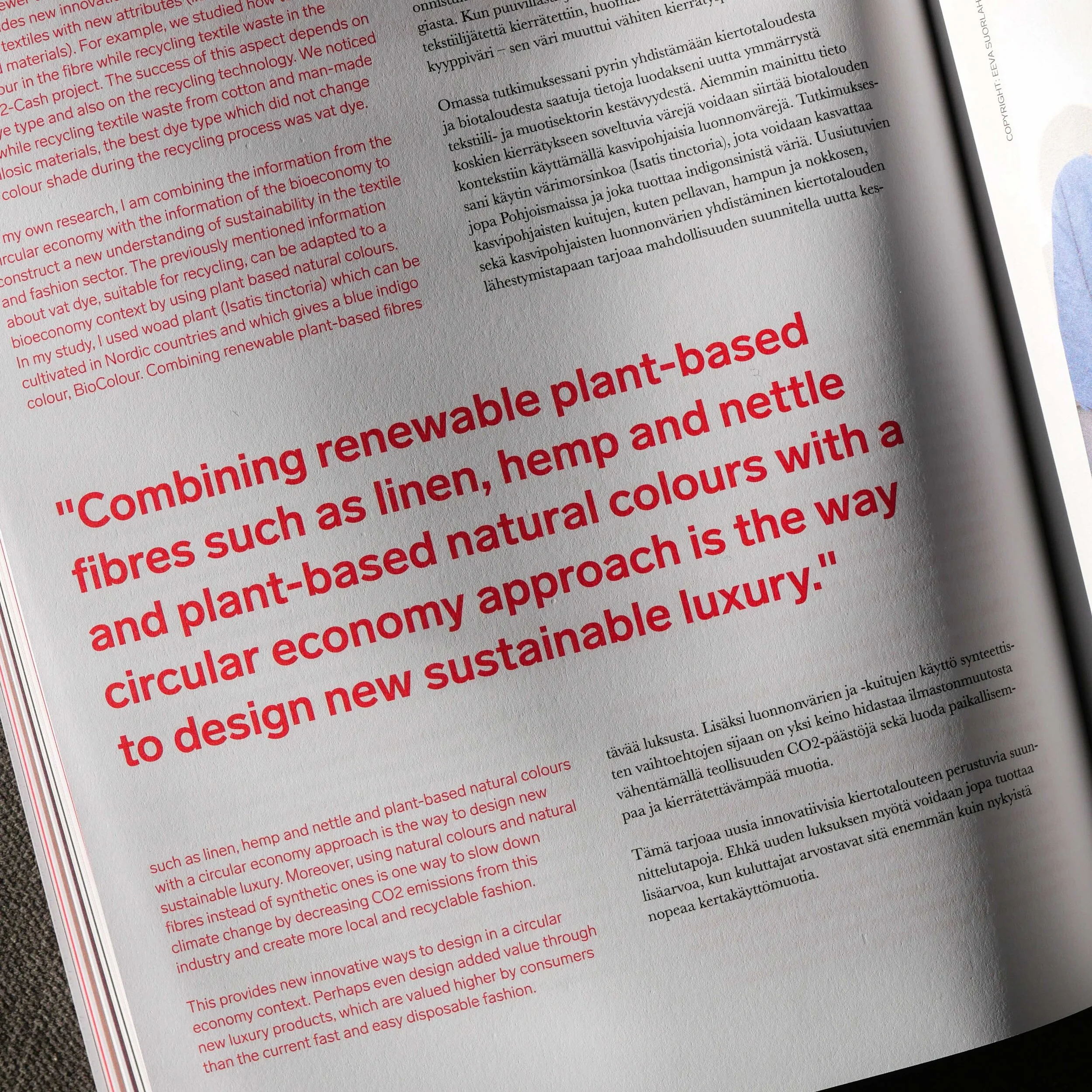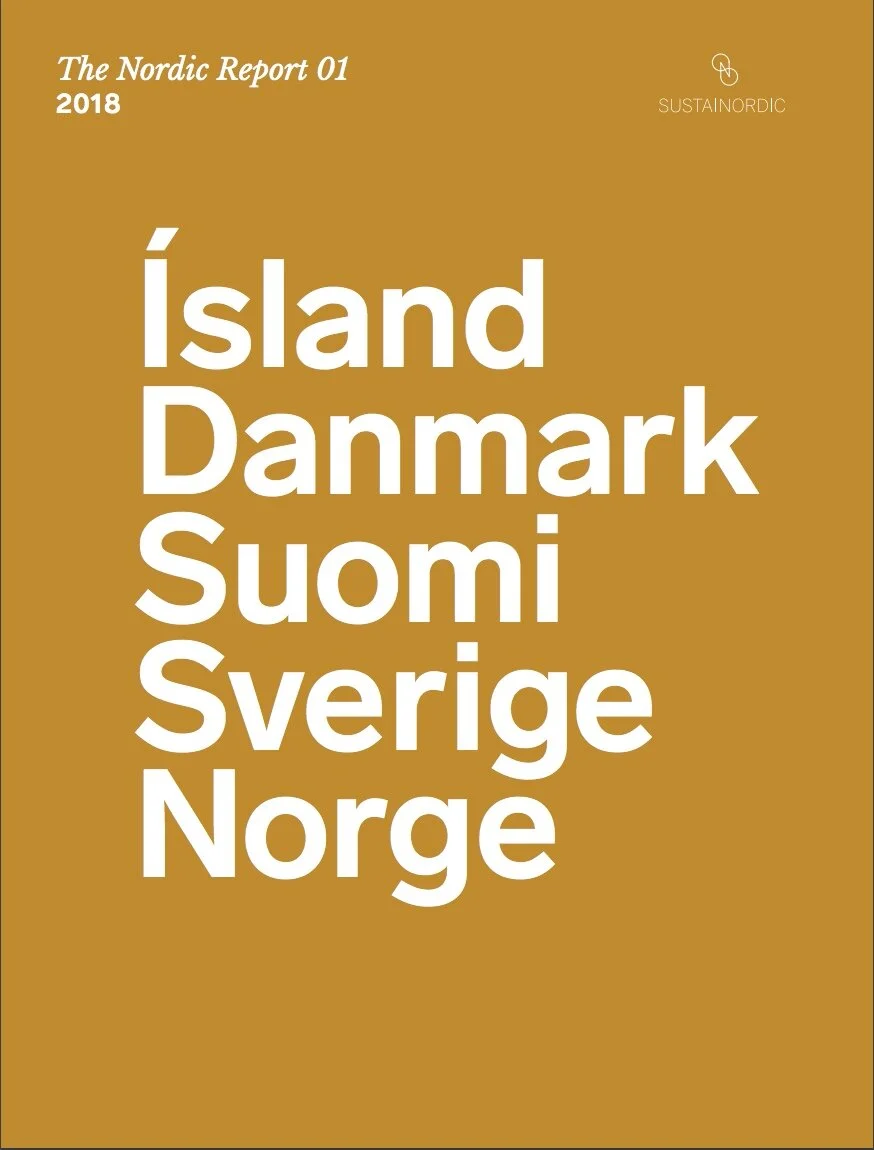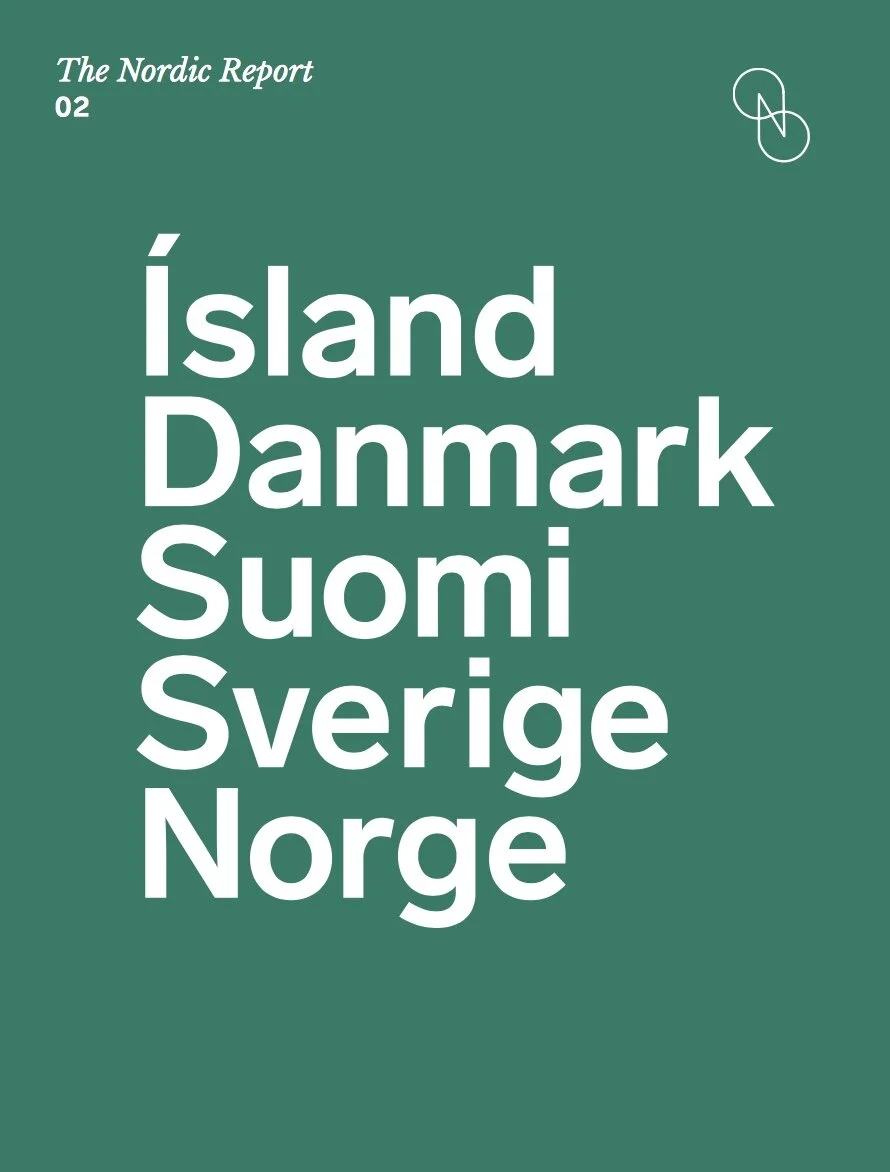The first Sustainordic report - The Nordic Report 01 - was published by SUSTAINORDIC at the end of 2018 and now a second report - The Nordic Report 02 - has just been released and is available through bookshops and as a pdf version available on line.
This is an important publication that should be seen to mark a point where it is possible to claim that the principles of sustainability in design and production are bedding in … moving on from lobbying to mainstream implementation.
It is no longer acceptable for governments simply to produce lists of aims and targets and platitudes … a wish list that they hope will get them through to at least the next election.
This publication has the support of the Nordic Council of Ministers and is produced through a partnership of six major design bodies from each of the Nordic countries - so from Iceland, Denmark, Finland, Sweden and Norway - with Iceland Design Centre, Danish Architecture Centre, Design Forum Finland, Form Design Center and Ark Des, and DOGA. SUSTAINORDIC was established in 2015.
As with the first report, this report takes as its starting point Responsible Consumption and Production - Goal 12 of the UN Sustainable Development Goals - but with twelve points of action to form a manifesto “which resonates with Nordic values.”
It is interesting to see that the order of the action points in the updated manifesto for Report 2 have been rearranged, implying that priorities have been reassessed, and the impact of these manifesto points have also been sharpened up with stronger and more memorable headings. It is also clear that, in the year between the publications, some terms or definitions have entered a wider public usage so do not need to be explained in quite the same way.
In the 2018 manifesto, item 08 was to ….
Promote circular economy by improving the overall performance of products throughout their life cycle.
We inspire greater awareness of the urgency of products and environments being manufactured to be reused with high quality in technical or biological cycles.
…. but in this new report, at the beginning of 2020, the circular economy has risen up the order and has been given more punch. So now ….
05 CIRCULAR ECONOMY
Promote a circular economy by improving the overall performance of products throughout their life cycle. We encourage a circular approach to minimise waste and to make optimal use of resources in production, in contrast to the "take, make & dispose" model of the traditional linear economy.
The report makes full use of a strong layout design with good graphics, distinct colours and attractive line-work illustrations - although, of course, anything other than good design would have been roundly criticised with so many design organisations involved.
That it is not a stuffy government or public information paper - with bullet points, foot notes and pages of references to sources - shows that SUSTAINORDIC and the Council of Ministers understand that climate change can only be tackled and sustainability only achieved by political action that involves and engages people to gain their support and will be achieved through radical changes in the approach and the work of architects, engineers, planners, designers, food producers and manufacturers.
Some points set out here might seem obvious … so Film, literature, music and art can be powerful weapons … but maybe even now, even in our digital and online World, that still needs to be said and other comments seem obvious when set out here but I have never heard many of these arguments made so simply and so forcefully so ….
Around 80 per cent of a product’s environmental impact is determined already in the planning phase. Using the design process as a method – to think twice in the early stages, work against norms and involve the users – is an effective way to take sustainable action.
Again, in this second report, there are, within each section, profiles and inspiring interviews about companies and products and, again, this reinforces that, for the Nordic countries, sustainability is not about concerns and committees and initial policies but about work and projects that are already in hand and moving forward.
Nordic Council of Ministers
SUSTAINORDIC
















































